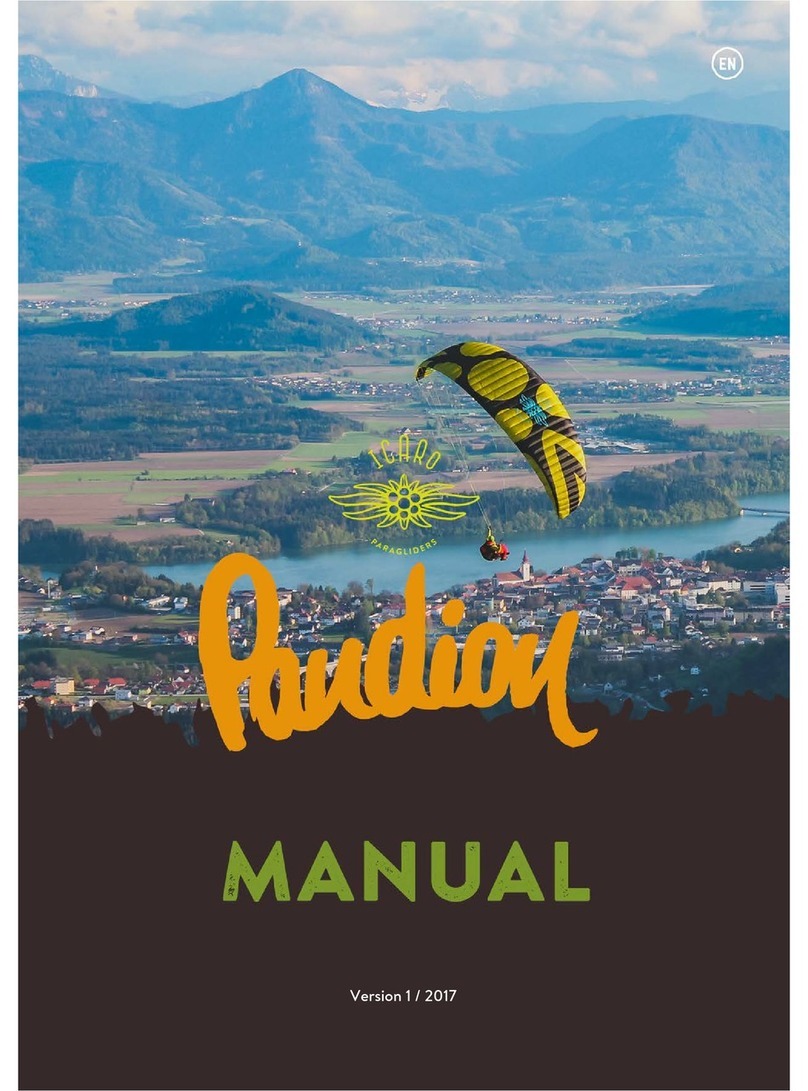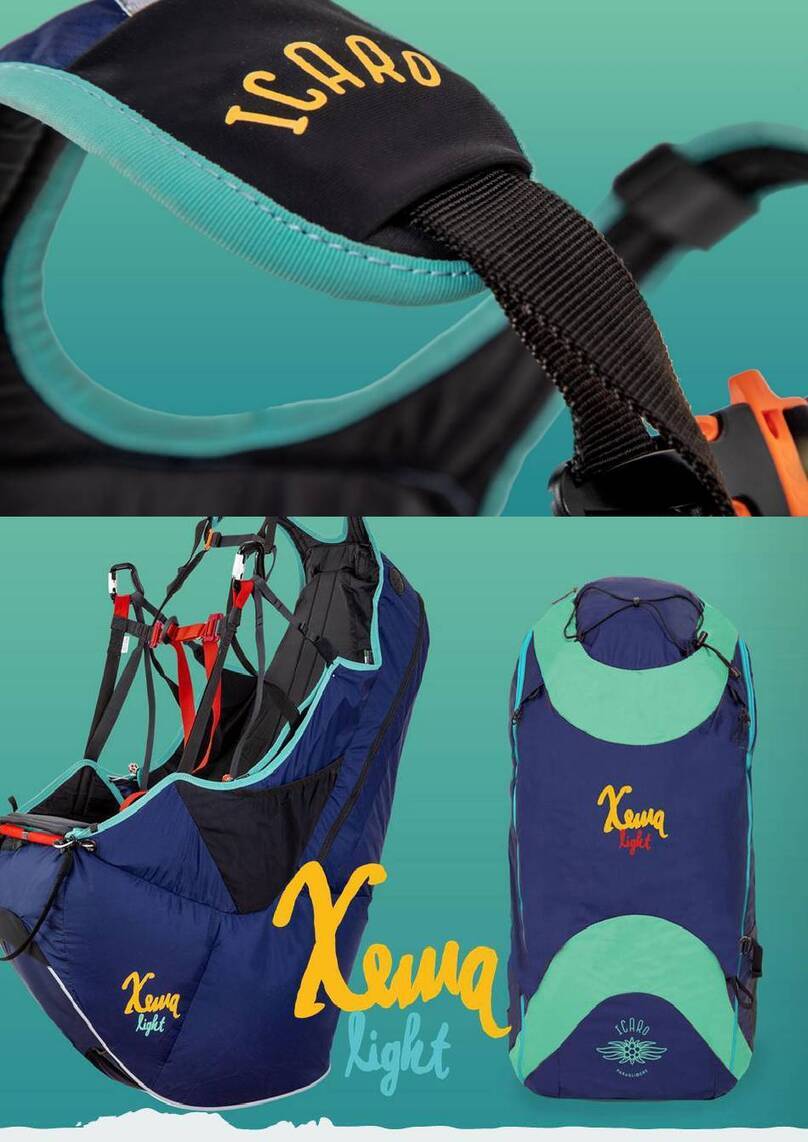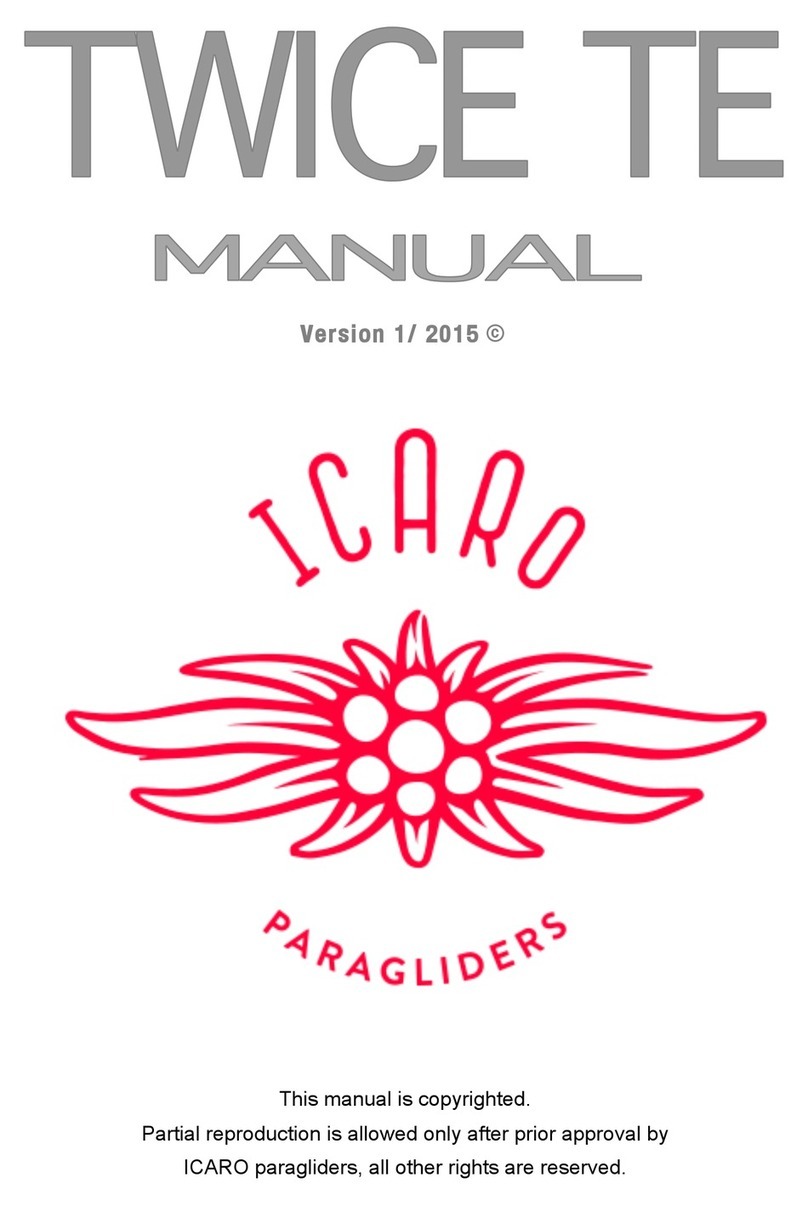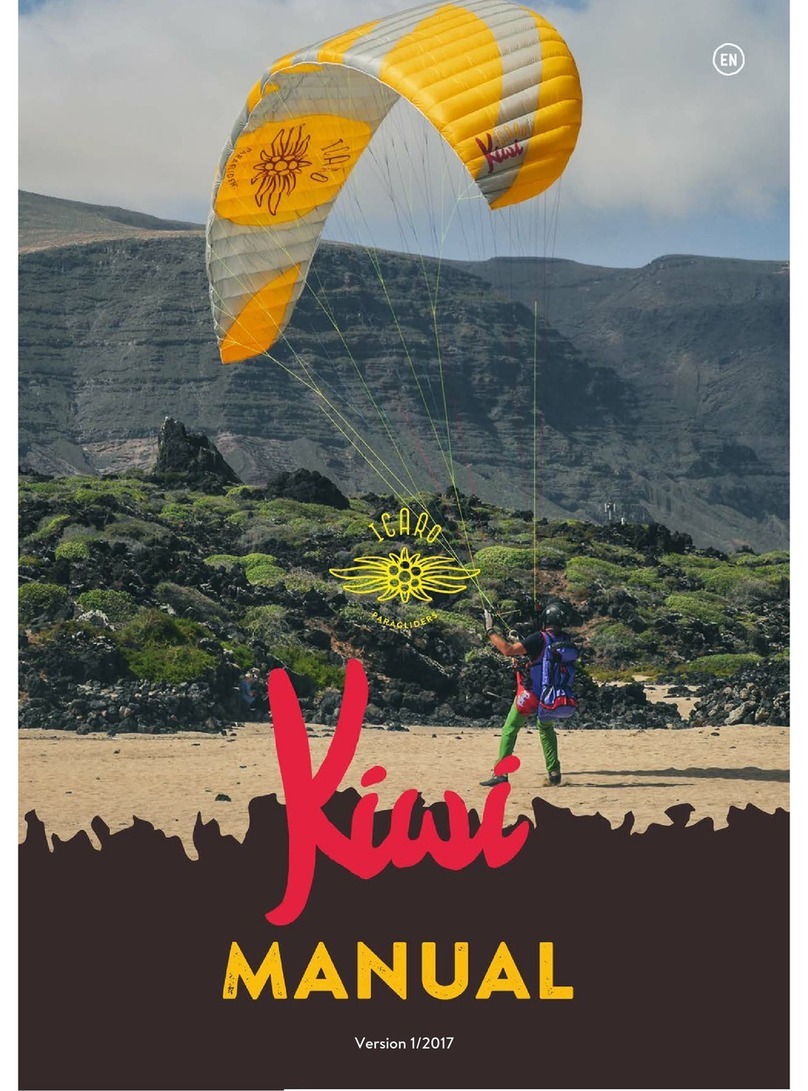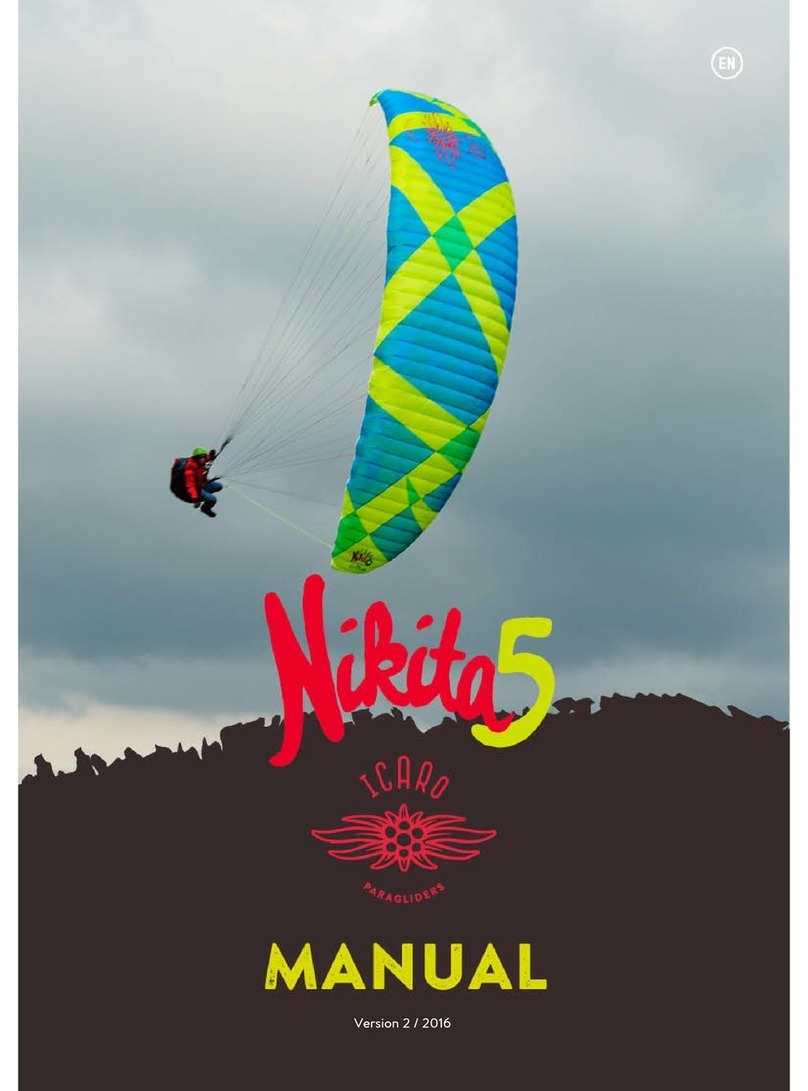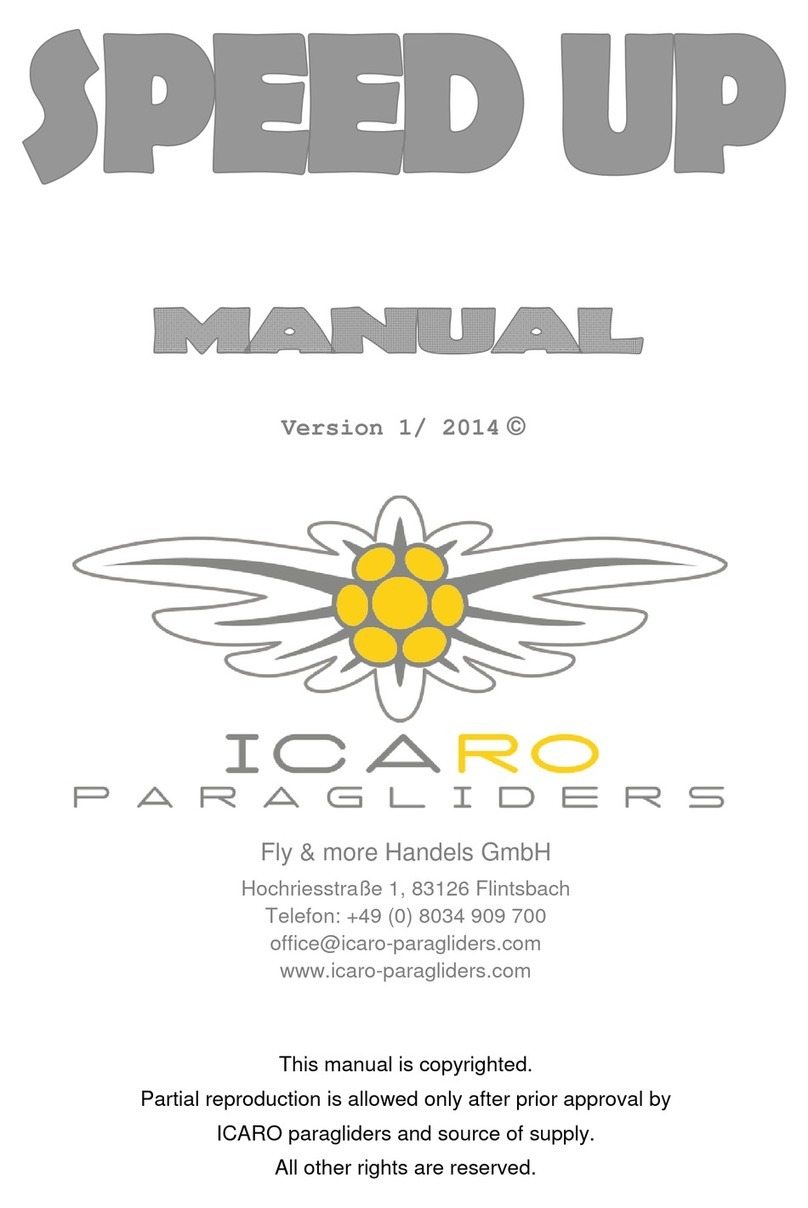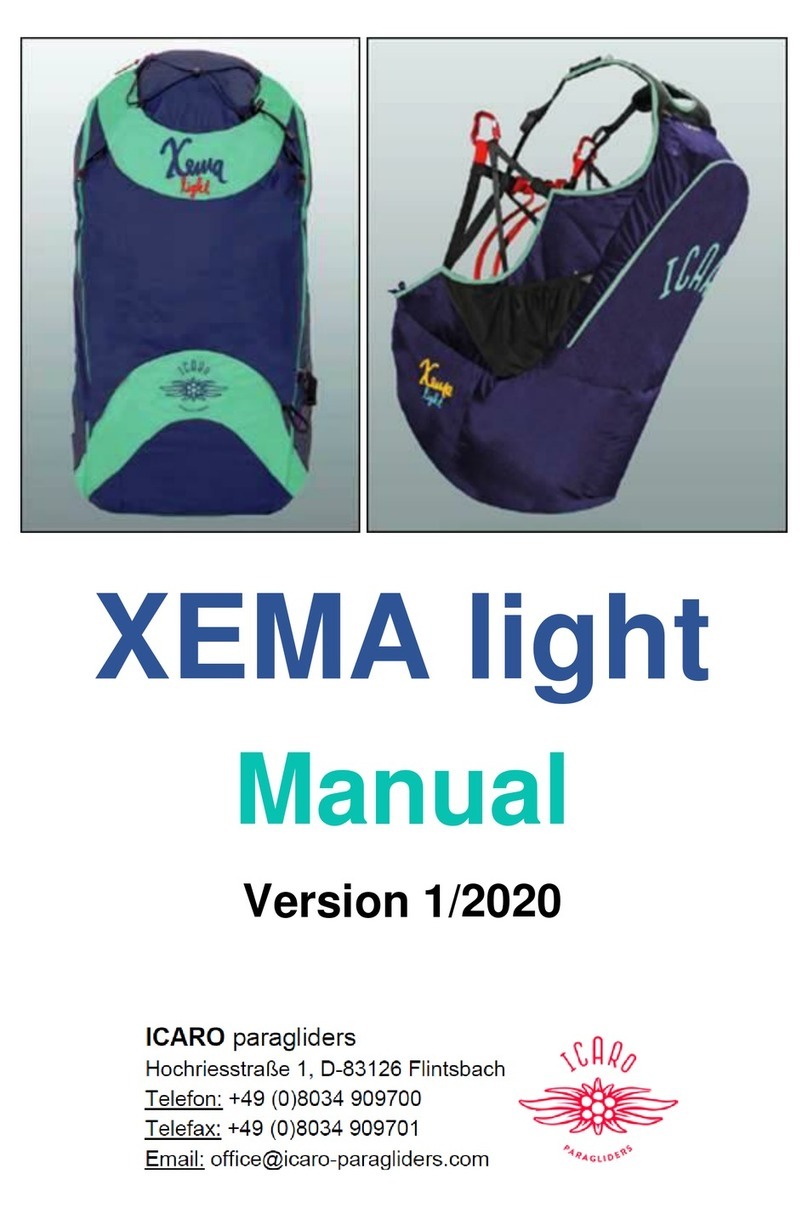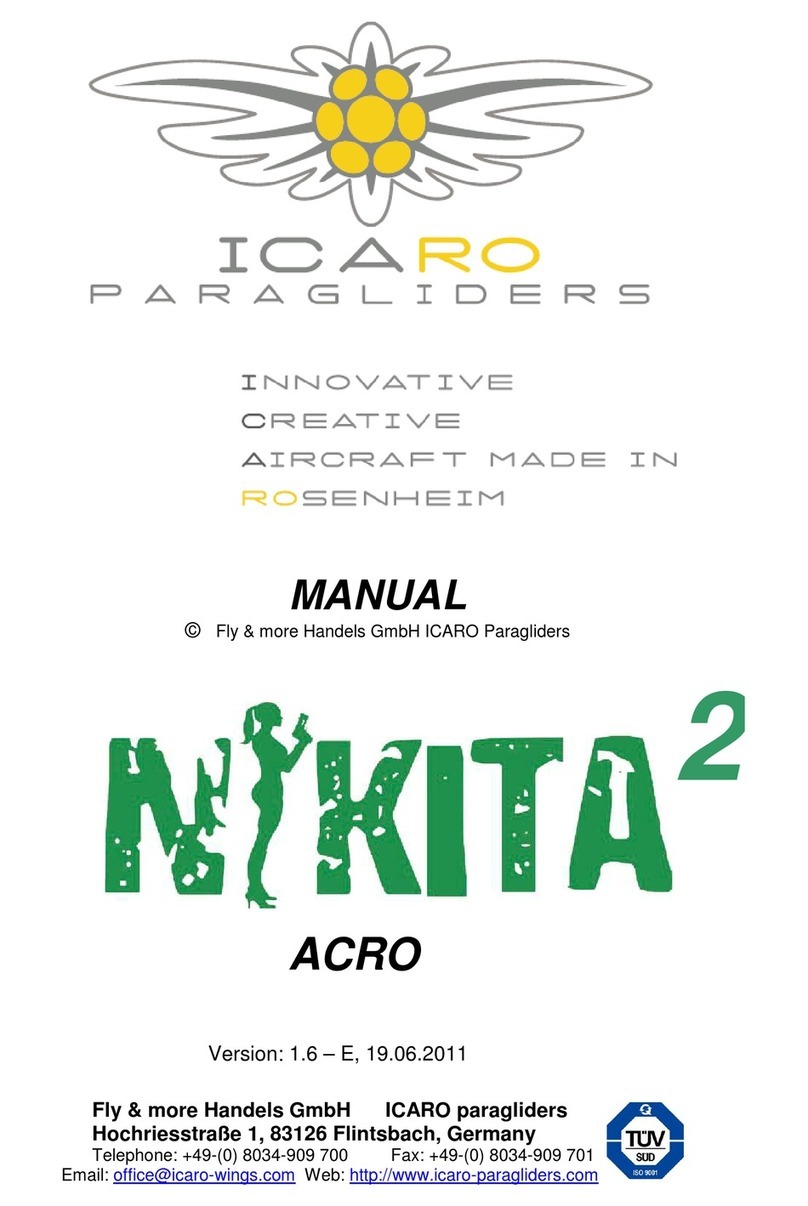Page 10
The adjustment of the harness chest strap controls the distance between
karabiners and affects the handling and stability of the glider.
Excessive tightening the chest strap increases stability but also the risk of twists
following glider collapse, and it also increases the frequency of getting collapses
due to poor feedback from the glider.
The risk of twisting is also strongly affected by the seating position of pilot.
Flying in a laid back (reclined) position makes it much more difficult to react in time
to prevent riser twisting.
With the chest strap in a more closed position the glider also has more tendency to
maintain a stable spiral, lengthening of the chest strap gives more feedback from
the glider but decreases stability.
ICARO paragliders recommends following settings:
Take-off weight < 80kg 80 kg -100 kg > 100kg
Horizontal distance of
the main karabiners 38 cm – 42 cm 42 cm – 46 cm 46 cm – 50 cm
Flight preparation
•Whilst unfolding your paraglider check the canopy and cell walls for damage.
Always take into consideration that the paraglider may have become damaged
during transportation.
•Make sure that no sand, stones or snow get inside the canopy as the extra
weight collected in the trailing edge may slow down or even stall the glider.
Sharp edges damage the canopy.
•Check the lines for knots, twisting and damage, the brake lines for knots, kinks
and their symmetric. Loose or incorrect brake knots can cause serious
accidents through loss of the steering of the glider! The correct length of the
main brake line must not be altered.
•Separate the line groups carefully and bring the risers in order. All lines must
run freely from harness to canopy. It is equally important that the lines are
unhindered and cannot get caught up during the launch.
•There should not be any lines underneath the canopy. If the lines wrap around
the canopy, this can result in injury or death!
•Check your harness and make sure that all connections to pilot are correctly
closed. Check that all karabiners are closed and cannot be opened accidentally
in flight and the risers are not twisted. Check canopy (all cells are open), wind
direction and airspace.
Launch
The most important thing during the take-off is, like at all other gliders too, not the
force but the constancy of the pull. At the start we advise to fix the accelerator with
the Velcro which is attached at the front of the sitting board, in order to avoid
tripping while pulling up the glider or when starting up.
Hold the inner A-risers and the handles of the brakes and use progressive
pressure on the A-risers and the energy of your own body weight until the wing is
fully inflated overhead. The canopy is inflated quickly.

